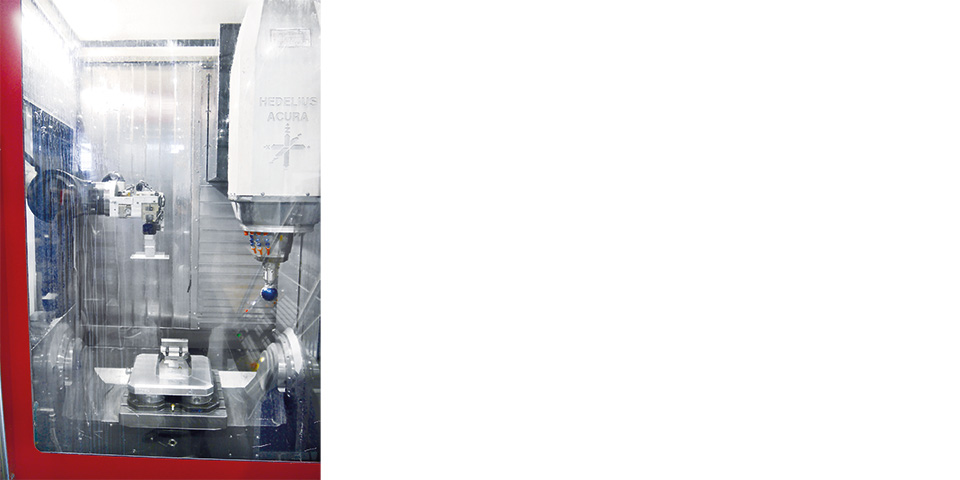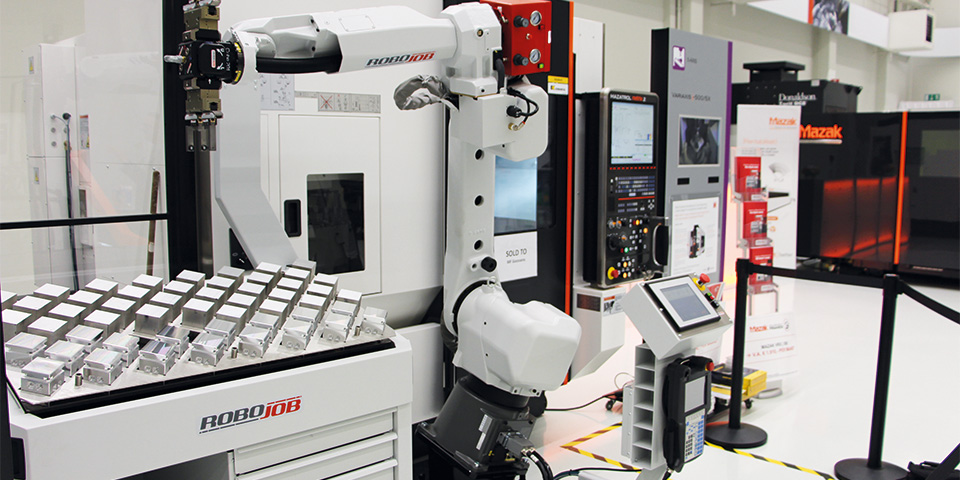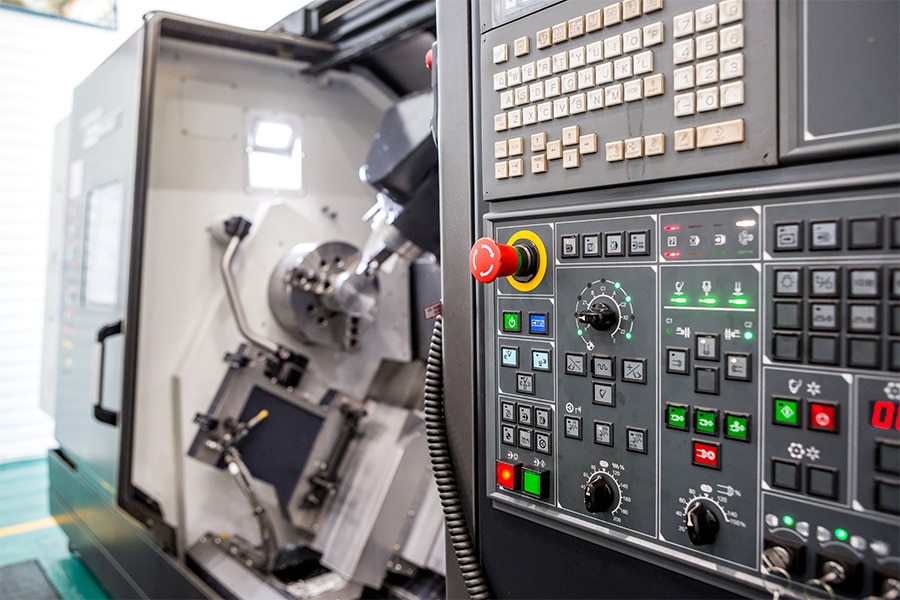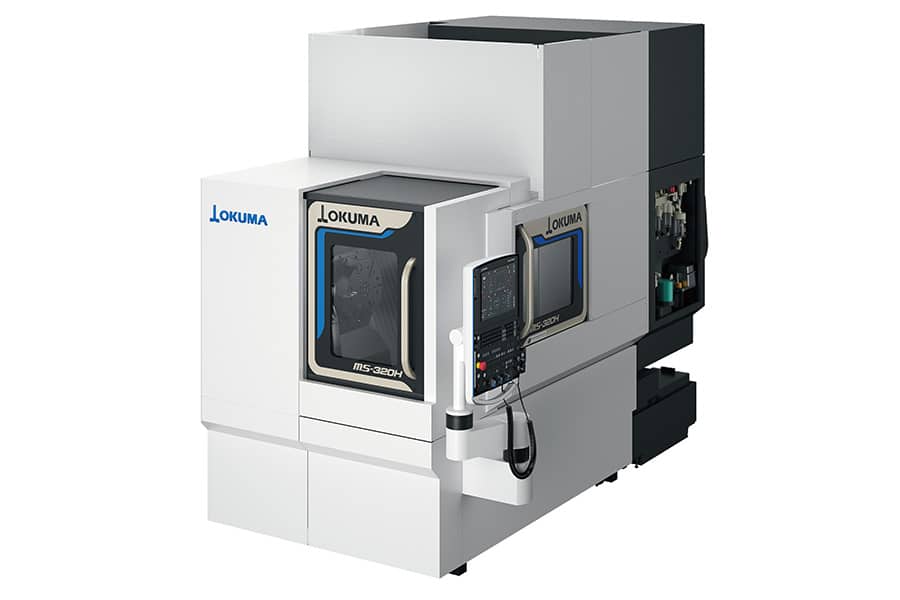
Points to consider when automating a milling machine
In times of scarcity of technical personnel and increasing quality requirements, automation is in many cases the best possible response by company managers to ensure profitability. It is no different for milling, and the machines are also easy to automate, often easier than a lathe. This has everything to do with the fact that the process has shorter chips and no spinning mass.

Not so much speed, but continuity make the difference. A robot is capable of doing the same work at the same pace for hours at a time. It is not distracted, has no breaks, phones or meetings and delivers consistent quality.
But when is it actually interesting to automate? A rule of thumb for small series is: if the series is large enough to run unmanned for one hour, then it already pays to deploy a robot. Experience shows that using a robot increases production capacity in daily production by at least 20% compared to manual production with a machine operator. The secret to this? Not so much speed, but continuity. A robot is capable of doing the same work for hours in a row at the same pace. It is not distracted, has no breaks, phones or meetings and delivers consistent quality. For products with a run time of 2 to 6 minutes, the increase in efficiency in staffed production hours is highest. Before delving deeper into the areas of concern when automating a milling machine, it is good to clarify the distinction between three-, four- and five-axis machines. After all, this also has its impact on the automation solution.
Three-axis milling machine
A three-axis machine is generally used for milling simple products. The machine can possibly have a fourth or fifth axis added to it to machine the product along multiple sides in the same fixture. Automation of such machines is driven by the shortage of technically skilled person and increasing production capacity (both manned and unmanned).

Five-axis machines are by far the most frequently automated because products can be machined five-sided or nearly complete in the first fixture.
Four-axis milling machine
A four-axis machine will machine products in horizontal direction. Notable advantages include favorable chip removal, horizontal machining, stable design, high processing speeds, the presence of cooling systems and long-term operability. These features make these machines ideally suited to automation, even if they are somewhat older. They often have a pallet changing system with a pallet or tension column. Loading and unloading the tension pillar is labor-intensive work, and tension pillars still require some investment. Automating horizontal machines avoids expensive fixtures and many manual operations in the loading process. One point to consider when automating is making air passages.
Five-axis milling machine
These machines are by far the most frequently automated because products can be machined five-sided or nearly complete in the first fixture. Also, there is usually one product on the machine because the operator wants to access the product from all five sides. During the day, the use of automation is interesting to increase output. However, it is even more rewarding to continue unmanned production of five-axis machines at night. Automating a new five-axis machine is relatively easy, as a robotic interface, automatic door and air can often be ordered, and thus pays off. However, it is then important to fine-tune what is and is not present. Retrofitting a machine often comes at a cost. Despite these costs, it can still be worthwhile. Milling machines are usually equipped with tool control to monitor processes and product quality. Because the product can be tilted and turned around, the product can come off the machine cleanly, improving the automation process and product quality. However, it is important that the chips are properly discharged to the chip conveyor. An additional rinse can therefore be interesting.

Virtually all milling machines can be interfaced with an automation solution.
Fixture in the milling machine
In the milling machine, products are usually clamped in a clamp. The clamp is usually on a pallet that is on a zero-point clamping system or pallet-changing system. Both pallets and products can be changed automatically. The disadvantage of pallet handling for small batch production is that loading and unloading is labor intensive and it requires a large number of pallets for the unmanned period (storage capacity and costs). Therefore, product handling is increasingly being chosen. An additional advantage is that continuous batches can be produced overnight. Depending on the type of throughput, the control of the clamps can be pneumatic or hydraulic. For automating fine mechanical parts, an air feedthrough is often the most obvious choice. By using centrically tensioned clamps in combination with a centering station, products can be accurately be tensioned. The centering module will accurately pick up products in advance. Using a double gripper, a machined product can be quickly changed for a new one. The quick-change system offers the freedom to create custom fingers to handle machined parts with greatly changing shapes as well.
What is required to automate my milling machine?
- Machine coupling: the robot cell controller must be able to talk to the machine. A point to consider is whether the coupling has program number communication. This is necessary if different products are to be produced unmanned. However, older CNC machines often require some adjustments to be made on the machine side. Nevertheless, almost all milling machines can be coupled with an automation solution.
- Automatic door and automatic tensioning
- A stable and controllable process always benefits the production process, but for automation it is a prerequisite. Knowledge of the production process contributes to optimization and higher machine efficiency.
- Tool and material control: milling machines tend to have reasonable tool storage. Depending on the complexity of the product, at least 10 to 25 tools are usually needed for a complete operation. For automated production, it is important to have enough tools for the next product. For example, if three are to be made in succession, sixty tools is not a luxury. Overcapacity in the tool warehouse benefits the process. The dates of tools are maintained. Product numbers, wear and so on can also be tracked. In addition, errors are less likely to occur. If you want to produce a lot during unmanned hours, it's good to know how the tools stay within their tolerances and when they need replacement. Materials that lend themselves well to production during extended unmanned hours are well-machined materials such as aluminum, brass, steel and stainless steel. The more predictable the production process pattern of harder-to-machine materials, the more success their unmachined machining will yield.



